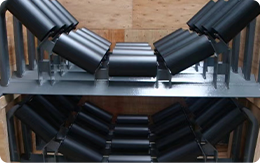 Afrikaans
Afrikaans  Albanian
Albanian  Amharic
Amharic  Arabic
Arabic  Armenian
Armenian  Azerbaijani
Azerbaijani  Basque
Basque  Belarusian
Belarusian  Bengali
Bengali  Bosnian
Bosnian  Bulgarian
Bulgarian  Catalan
Catalan  Cebuano
Cebuano  Corsican
Corsican  Croatian
Croatian  Czech
Czech  Danish
Danish  Dutch
Dutch  English
English  Esperanto
Esperanto  Estonian
Estonian  Finnish
Finnish  French
French  Frisian
Frisian  Galician
Galician  Georgian
Georgian  German
German  Greek
Greek  Gujarati
Gujarati  Haitian Creole
Haitian Creole  hausa
hausa  hawaiian
hawaiian  Hebrew
Hebrew  Hindi
Hindi  Miao
Miao  Hungarian
Hungarian  Icelandic
Icelandic  igbo
igbo  Indonesian
Indonesian  irish
irish  Italian
Italian  Japanese
Japanese  Javanese
Javanese  Kannada
Kannada  kazakh
kazakh  Khmer
Khmer  Rwandese
Rwandese  Korean
Korean  Kurdish
Kurdish  Kyrgyz
Kyrgyz  Lao
Lao  Latin
Latin  Latvian
Latvian  Lithuanian
Lithuanian  Luxembourgish
Luxembourgish  Macedonian
Macedonian  Malgashi
Malgashi  Malay
Malay  Malayalam
Malayalam  Maltese
Maltese  Maori
Maori  Marathi
Marathi  Mongolian
Mongolian  Myanmar
Myanmar  Nepali
Nepali  Norwegian
Norwegian  Norwegian
Norwegian  Occitan
Occitan  Pashto
Pashto  Persian
Persian  Polish
Polish  Portuguese
Portuguese  Punjabi
Punjabi  Romanian
Romanian  Russian
Russian  Samoan
Samoan  Scottish Gaelic
Scottish Gaelic  Serbian
Serbian  Sesotho
Sesotho  Shona
Shona  Sindhi
Sindhi  Sinhala
Sinhala  Slovak
Slovak  Slovenian
Slovenian  Somali
Somali  Spanish
Spanish  Sundanese
Sundanese  Swahili
Swahili  Swedish
Swedish  Tagalog
Tagalog  Tajik
Tajik  Tamil
Tamil  Tatar
Tatar  Telugu
Telugu  Thai
Thai  Turkish
Turkish  Turkmen
Turkmen  Ukrainian
Ukrainian  Urdu
Urdu  Uighur
Uighur  Uzbek
Uzbek  Vietnamese
Vietnamese  Welsh
Welsh  Bantu
Bantu  Yiddish
Yiddish  Yoruba
Yoruba  Zulu
Zulu conveyor pulley catalogue
Understanding Conveyor Pulley Catalogues
Conveyor systems are crucial in various industries, playing a vital role in the efficient movement of materials. At the heart of these systems are conveyor pulleys, which are essential components that support the belt and provide the necessary tension for its operation. Understanding the specifications and types of conveyor pulleys is paramount, and this is where a conveyor pulley catalogue becomes an indispensable tool for engineers, technicians, and system designers.
A conveyor pulley catalogue is a comprehensive document that details the different types of pulleys available, their specifications, applications, and various sizes and materials. Typically, these catalogues provide insights into the design and construction of pulleys, including features like diameter, face width, shaft size, and weight capacity. This information allows users to select the most appropriate pulley for their specific application, ensuring optimal performance and longevity in their conveyor systems.
Types of Conveyor Pulleys
The catalogue usually categorizes pulleys into different types based on their functions
1. Drive Pulleys These pulleys are located at the head of the conveyor system and are responsible for driving the belt. They are usually powered by a motor and are designed to handle the tension required to move the load.
2. Tail Pulleys Located at the opposite end of the conveyor system, tail pulleys primarily serve to return the belt. They play a significant role in tensioning the system and can also support the loading of materials.
3. Snub Pulleys These are used to adjust the angle of the belt, improving its grip on the drive pulley. Snub pulleys enhance belt tracking and reduce slippage, making them critical for ensuring the efficiency of the conveyor system.
4. Bend Pulleys Used to change the direction of the conveyor belt, bend pulleys are crucial in multi-directional conveyance operations. Their role is to guide the belt around tight corners while maintaining tension.
conveyor pulley catalogue

Materials and Construction
The materials used in constructing conveyor pulleys are also detailed in the catalogue. Common materials include steel, aluminum, and various polymers, each with its durability and weight-bearing capabilities. For instance, steel pulleys are robust and suitable for high-load applications, while aluminum pulleys may be used in lighter-duty systems or where corrosion resistance is essential.
Furthermore, the construction methods, such as welding, casting, or machining, can influence the performance of the pulley. The catalogue highlights these aspects, informing users about the recommended applications for each type of construction.
Selection Criteria
When navigating a conveyor pulley catalogue, several selection criteria should be considered
- Load Capacity Understand the weight and type of materials the conveyor will transport to determine the appropriate pulley capacity. - Speed The velocity of the conveyor system impacts pulley selection. The catalogue provides information on the suitable speed limits for different types. - Environmental Conditions Factors like humidity, temperature, and exposure to chemicals can affect material choice and pulley longevity. The catalogue helps users select pulleys designed for specific environmental conditions.
Conclusion
In conclusion, a conveyor pulley catalogue is not just a listing of products; it is an essential resource for the design and maintenance of conveyor systems. By providing detailed specifications, types, and selection guidelines, these catalogues enable users to make informed decisions that enhance operational efficiency and reliability. Properly selecting and maintaining conveyor pulleys will ultimately lead to streamlined material handling processes and increased productivity in various industrial applications.
-
Revolutionizing Conveyor Reliability with Advanced Rubber Lagging PulleysNewsJul.22,2025
-
Powering Precision and Durability with Expert Manufacturers of Conveyor ComponentsNewsJul.22,2025
-
Optimizing Conveyor Systems with Advanced Conveyor AccessoriesNewsJul.22,2025
-
Maximize Conveyor Efficiency with Quality Conveyor Idler PulleysNewsJul.22,2025
-
Future-Proof Your Conveyor System with High-Performance Polyurethane RollerNewsJul.22,2025
-
Driving Efficiency Forward with Quality Idlers and RollersNewsJul.22,2025





























